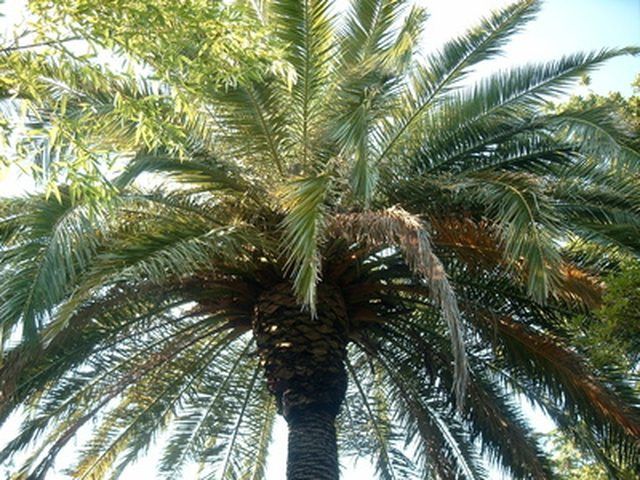Bulbs
Flower Basics
Flower Beds & Specialty Gardens
Flower Garden
Garden Furniture
Garden Gnomes
Garden Seeds
Garden Sheds
Garden Statues
Garden Tools & Supplies
Gardening Basics
Green & Organic
Groundcovers & Vines
Growing Annuals
Growing Basil
Growing Beans
Growing Berries
Growing Blueberries
Growing Cactus
Growing Corn
Growing Cotton
Growing Edibles
Growing Flowers
Growing Garlic
Growing Grapes
Growing Grass
Growing Herbs
Growing Jasmine
Growing Mint
Growing Mushrooms
Orchids
Growing Peanuts
Growing Perennials
Growing Plants
Growing Rosemary
Growing Roses
Growing Strawberries
Growing Sunflowers
Growing Thyme
Growing Tomatoes
Growing Tulips
Growing Vegetables
Herb Basics
Herb Garden
Indoor Growing
Landscaping Basics
Landscaping Patios
Landscaping Plants
Landscaping Shrubs
Landscaping Trees
Landscaping Walks & Pathways
Lawn Basics
Lawn Maintenance
Lawn Mowers
Lawn Ornaments
Lawn Planting
Lawn Tools
Outdoor Growing
Overall Landscape Planning
Pests, Weeds & Problems
Plant Basics
Rock Garden
Rose Garden
Shrubs
Soil
Specialty Gardens
Trees
Vegetable Garden
Yard Maintenance
How to Care for a Pindo Palm
How to Care for a Pindo Palm. The pindo palm--scientifically known as Butia capitata, and also called the jelly palm--is a versatile and hardy palm tree found in coastal areas throughout the Southeast, the Gulf States and California. With its curving, light green to bluish-gray fronds and yellow fruits, the pindo palm makes an excellent specimen...

The pindo palm--scientifically known as Butia capitata, and also called the jelly palm--is a versatile and hardy palm tree found in coastal areas throughout the Southeast, the Gulf States and California. With its curving, light green to bluish-gray fronds and yellow fruits, the pindo palm makes an excellent specimen planting. It is also well-suited to growing in containers at poolside and on patios. Despite its tropical appearance, the pindo palm is cold-hardy, tolerating occasional dips in temperatures as low as 10 degrees F. Follow proper techniques for planting and care to have one of these luxuriant palm trees grace your yard.
Things You'll Need
Shovel
Organic mulch
Commercial slow-release palm tree fertilizer in a 12-4-12 formulation
Pruning shears
Select a planting site for the pindo palm in full sun with well-drained, sandy loam or clay loam soil with a pH of 5.5 to 6.5. Don't plant the palm where it will overhang patios or decks, as the fruits can stain wood and concrete, and plant it at least 10 feet from sidewalks. Keep in mind that your pindo palm can reach 20 feet tall; give it room to grow.
Plant your pindo palm in the spring or summer by digging a hole twice the size of the root ball, and just deep enough that the tree will be planted at the depth at which it was grown. Backfill with the original garden soil. According to the Broward County, Florida's Environmental Protection website, it is beneficial to blend in a palm tree fertilizer at the rate of 2 ounces for every inch of trunk diameter.
Create a water ring, or berm, around your pindo palm by shaping the soil around the planting hole into a ring 6 inches high by 8 inches wide. This will help conserve water and promote good root establishment by drawing moisture outward.
Irrigate your pindo palm by filling the ring with water. Continue to water your newly-planted pindo palm frequently, watering it daily for the first two weeks. Avoid letting the soil dry out, which could severely stress your new tree. Reduce watering gradually over several months as the palm tree establishes itself. After its second year, your drought-tolerant pindo palm should need little watering.
Apply a 3-inch layer of organic mulch to conserve moisture and protect the roots. Don't let the mulch touch the palm tree's trunk.
Fertilize your pindo palm tree in the spring and again in midsummer, using a slow-release palm fertilizer in a 12-4-2 formulation. Apply it to the soil in a large ring starting at least 2 feet from the trunk and extending out to the drip line--the place where rainwater drips from the outermost fronds--at the rate of 8 ounces per inch of trunk diameter. Water after applying.
Prune any yellowing or damaged fronds. Your pindo palm will not shed them naturally. According to the Majestic Palm Trees website, pindo palms should not be pruned in the winter.